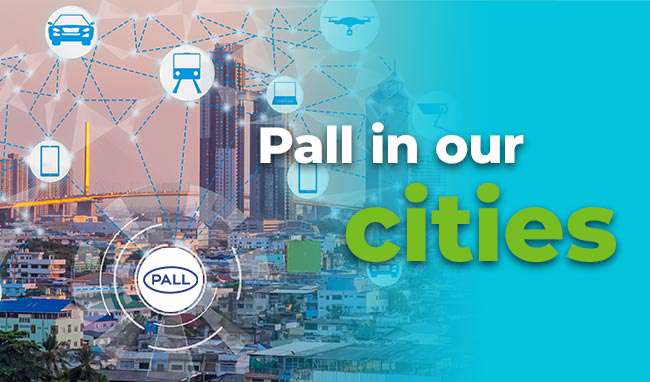
From Freeways to Food Banks: Pall Technology in Our Local Cities
Regardless of the city you live in, there's evidence of Pall technology all around you. Discover how Pall contributes to everyday life in our local communities:
Protecting emergency helicopters: Airlift and firefighting helicopters are critical resources during local emergencies. Pall engine air intake vortex systems and dry barrier filters help protect helicopter engines from early erosion, enabling them to make frequent landings (even on unprepared ground) and achieve the defined engine MTBR (Mean Time Between Removals) even in the most arduous environments.
Supporting first responder communication: Pall filters are used to produce multilayered ceramic capacitors (MLCCs), which support the safety and reliability of on-board electronic circuits used in smartphones, tablets and electric vehicles. These technologies enable rapid communication among first responders, police, ambulances and fire crews.
Keeping "smart cities" connected: There are over a billion smart surveillance cameras installed globally, safeguarding the security of our world's cities and communities. Pall MicroE contributes to public safety by helping create the microchips that power these cameras.
Extending the reach of local food banks: Pall filtration helps ensure that bottled water, juices and other food and beverage items are free from harmful organisms. This extends the quality, safety and shelf life of these products, enabling distribution to more people in need.
Keeping the lights on: Life is unfathomable without electricity, which is essential to keep our homes, schools, hospitals and public institutions running. The power stations that generate this power rely on power generation filtration technology to ensure a cleaner, safer and more reliable power supply.
Improving public transit: Microchips produced with the help of Pall filtration are used in digital freeway signage, which provides accurate, real-time transit information, delivers important emergency information, and helps create better commuter experiences.
Enabling public internet at local libraries: Those same microchips also enable computers, PC displays and internet connections at our local libraries, which give many people access to online education and resources.
Powering public transportation: Many of today's taxis and shuttles run on electric vehicle (EV) batteries, which rely on Pall technology to ensure the highest cleanliness of battery components and electrolyte fluids. Pall also contributes to clean energy solutions (like liquefied natural gas), which power a growing number of public bus fleets.
Helping decarbonize our environment: Pall is at the forefront of technologies deployed by governments, communities and industry, to reduce harmful environmental emissions and help counter the threat of global warming. Our technologies are applied to carbon capture processes, to the production of 'green' hydrogen and in the recycling of plastic waste to recover the hydrocarbon content.
